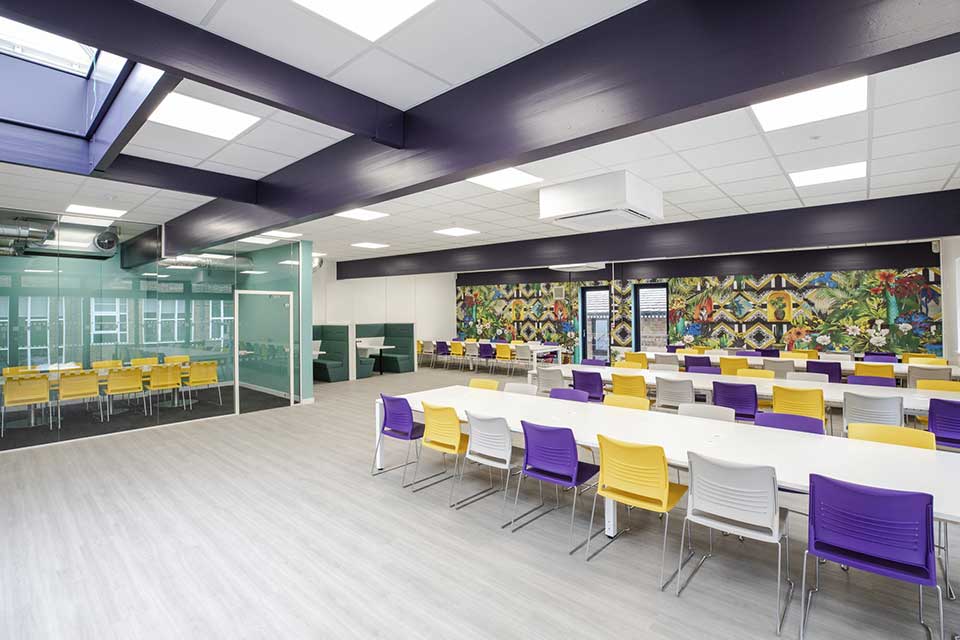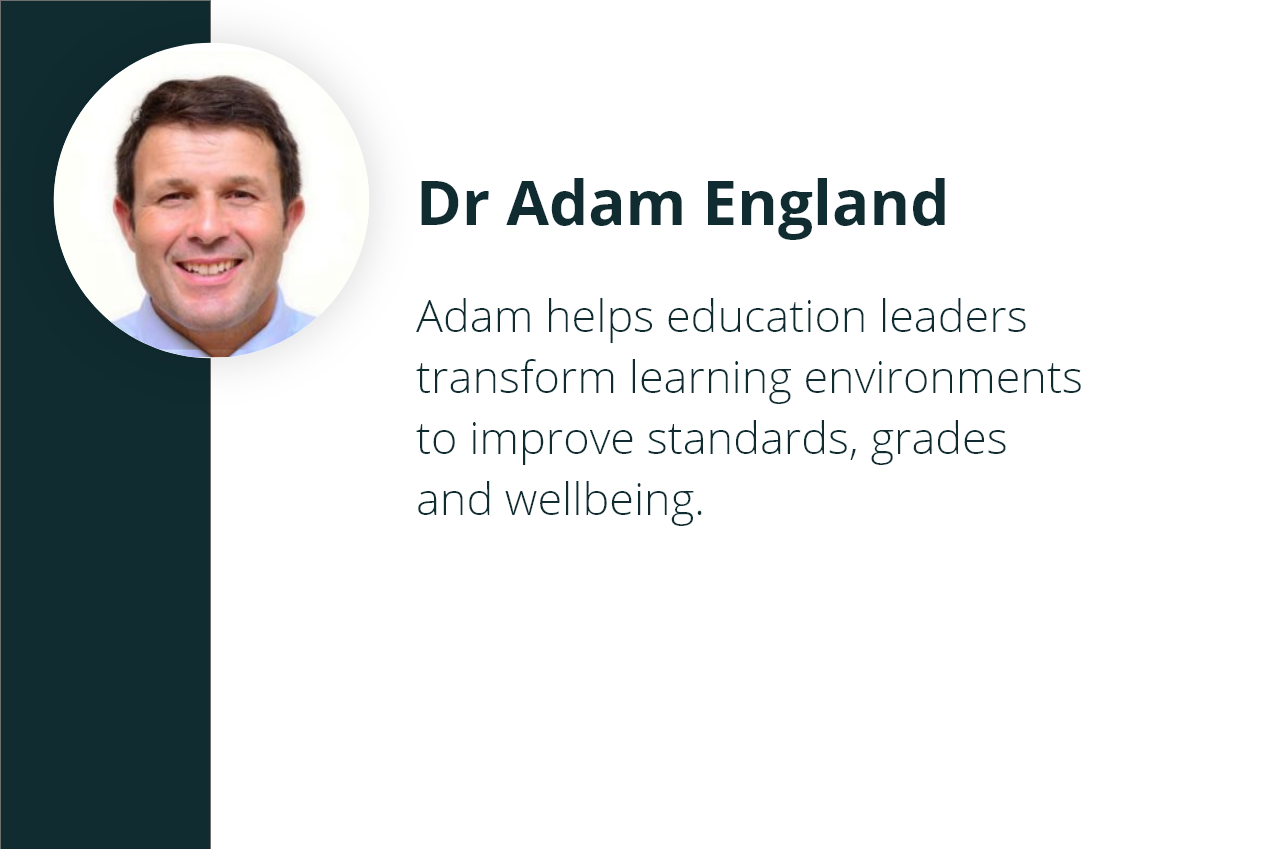Human Centric Design Thinking with Adam & Jo

https://youtu.be/RTYNri3zf5A
So, Jo, we just came back from our own CPD in Halifax for our northern clients. Following that up with an extended visit to the Girls School Association Annual Conference at the Tower Hotel in London. Both of us had a wonderful time at both events, and we made some significant observations about the direction of travel in the various industry sectors. Let’s start with our CPD. Both of us had a great time. Both of us were eager to welcome our old and new customers. We could see that there was a real focus on a particular type of thinking regarding people, pedagogy, and place. I’ll let you sum up what you saw during CPD.
The people I saw were collaborating. That’s what I would really focus on. People came together to discuss and share ideas, which I think is wonderful. They wanted to learn a little bit from us, about how they could start on their journey.
Many of them were at different stages of their journey. And the survey that we’ve taken and the analysis that we’re giving back to them just really shows that they’re at different points in their journey. As a result, they were able to ask questions and we were able to showcase our work. Our goal was to demonstrate pedagogy and how you can change the classroom to enhance learning for self-directed learning, project-based learning, engagement with technology, and to compare it to the Victorian classroom. That you absolutely loved. That really demonstrates why we selected that specific location. We had the right people. We were discussing the right kind of pedagogy, and we were in the right place. So yeah. The Victorian classroom, Adam.

P to the power of three, Jo, p cubed. Seeing the difference between commercially oriented learning spaces and the seminar rooms where we do most of our CPD was particularly fascinating for me, as was the Victorian classroom that our head of marketing had set up using the company which provides the BBC with much of its props.
What was fascinating about the Victorian classroom was to see how rigid and immobile the desks were. This was because they were essentially command and control arrangements and enforcing upon children, you will obey. And when you worked from the chalkboard at the front of the class, you could see how centered on knowledge transmission the system was. In turn, you could see how much the system relied on hierarchy and compliance. These ways of thinking, I think, were probably outmoded a hundred years ago. They certainly are now. Yet the hard fascination of being in that environment was the realization that probably ninety five percent of schools in the UK still use it. That we are still so attached to our legacy thinking about education, that we find it very hard to transcend that thinking into the dimensions that you and I both work in.
I think the other point to extrapolate from the CPD was probably how likeminded entities regarding people, pedagogy and place come together, they formed very, very strong peer groups and then you have an exponential sense of progress. My observation across the industry from the last twelve months is how quickly the pace of thinking about moving forward has picked up in some areas, certainly not all and probably only in a tiny percentage of people. But in that percentage of people, who understand that the risk of moving forward is far less than the risk of staying still, you can see that the growth rate is exponential. So, I think that was the fascination for me. The comparison between the Victorian learning center and a modern future facing one.
And the power of when we walked from the space that we had been in the morning discussing all these interesting factors. You walk in there and the acoustics and the lighting hit you quickly as you entered it. You could hear the conversations of a lot of people going, yeah, but, this is more like the place we are used to being in if we’re really honest. I was just amazed at the contrast and the realization. You could clearly see it on people’s faces. So, I think there was a real power in in that setup.
You and I both know how important it is to impress people with the value of what we’re discussing. We can’t just talk about it. It must be an experiential form of CPD. And I don’t think there’s any greater experience than walking into a Victorian classroom and being hit by monolithic lighting. As we listen to the reverb of all the hard surfaces and think about how many neurodiverse students learn, some a little and some a lot, from the neurotypical medium. And yet we expected the system to function in environments like this. And as I said, it’s horridly fascinating that, you know, UK government is particularly fixated upon this model of learning. This is because it probably leaves maybe ninety five percent of learners at the door.
As well as seeing the power of what Sam was saying and the journey he’s now on and his section focused on people and coaching around well-being, well, that all brings it together as well. Also, Julie was discussing how she is getting a different type of person in the lower arousal area. You’re seeing your leaders collaborate and work together, but in a different setting. So, I think, altogether, everything just gelled and flowed from one thing to the next. Each individual bit had its story. And so, it’s starting to bring people on the journey with them. I hope that the information that we send back to the delegates will see how to go to that next step, that’s what I’m really excited about.
The experiential nature of CPD makes it very easy to create a narrative, which I believe is what makes it both engaging and exciting for attendees. The follow-up with the research that you’re doing, you’re collating the thinking, collating the perceptions, and collating the standardized data, creates that critical mass of thinking, which moves the concept of what we’re doing it for that much faster. If we briefly segue into GSA, I think it’s probably fair to say we came across quite many like-minded people there too who understand where and how they must change. They do understand that the need for change is pressing and doing it now is less risky than procrastinating.
I’d absolutely agree. It’s focused so many lovely people. The thing is they’re the conversation starters, and that’s what’s exciting. Because you let them share with you their story, and so you can empathize with where they are now. And then you can give them all nuggets, little snippets of things that they could do to start to change. So, whether that’s a railway carriage in a corridor, whether that’s looking at where their exams are being held. There is the feeling that students get when they’re cramming into these massive assembly halls and all sitting down in single rows, and the impact that that can have on their exam results and progress. So, it was all these small conversations, and then it’s following those up afterwards to take these new relationships that we’ve just built onto the next step. I know that you and I talked a lot after saying that. So yeah, a really, really great event.
This is going to be quite a controversial statement that I’m about to make. But as far as I can see, the girls’ schools, and all the senior managers of schools who are women are far more receptive to change and to managing change and to moving schools forward, not in all cases, but my observation is that GSA fully understands that for its girls to become successful young women, there have to be significant changes made to provision that probably other more conservative sectors aren’t thinking about in as much depth.
I sometimes find it difficult to bring about change because it is so difficult, and our focus is always on people, pedagogy, and place to bring about change. One thing affects all of those. And where do you start on the change if you don’t have momentum behind you? COVID gave a big push on the use of technology. Some people have regressed with that and aren’t using it to the extent they did because there isn’t that push or that drive to use it. That doesn’t mean you shouldn’t, therefore, bring about these changes because you can see things, but sometimes you need, and this comes back to what we’re saying at the beginning, some collaboration, some headspace, some time to think and talk about, well, how are we going to move forward? Because just like you said, standing still is not going to get you anywhere, but moving forward is very challenging.
It’s exciting. Even if you don’t get it right the first time, you’ll learn from a mistake you make. So being in those experiential environments where people celebrate both their successes, their wins and their mistakes is going to be vital for leaders. The other observation I would make is that within the independent sector in the UK, it amounts to about eighty percent to our clients. It’s also fair to say that until recently there’s not been a particularly strong culture of accountability, so heads and senior leaders were able to do more or less what they wanted as long as the school’s image was preserved. But I do think post COVID parents are asking in more detail probing senior leaders about how they’re future proofing schools and saying, look, you’re having my daughter sit in straight rows of desks in a room that looks like a church is not doing it for her to sort of make her successful in 2035. And it’s not doing it for me as a parent. So, I think parents are beginning to think of their agency and using their voices to exert a bit of pressure on leaders.
That also comes from the fact they’ve had more visibility. Since the past couple of years, parents have been more aware of their children’s learning. School leaders are interested in supporting their child’s educational journey and not just academic performance. It’s much broader than that. Even the inspectors have acknowledged this by adopting a new and well-being-focused framework. So, it’s leadership. It’s so holistic. And parents are taking a bigger interest because they’ve seen where, maybe from their experience, they could help as well. There’s so much we can learn from business and parents, and they are part of the community. They are a stakeholder too. We need to step back and listen to them, listen to their students, listen to the parents. Listen to businesses and start to bring a lot of this into our school community. And working together, that will help.
There is a word of warning regarding working with commercially oriented organizations. And I think this is what the Thatcher government onwards try to do. They try to bring business into school, which is fine to a point, you introduced metrics and timelines and accountability. But I think what they forgot was that, you know, you need to focus on the humanity of schools as organizations. And so that tick box culture that’s probably prevailed during the 90s and the noughties. When you were a senior leader, and I was, I fought very hard not to undermine, but to counter to make sure there was always humanity in what we did. Otherwise, you’re just pushing buttons and pulling levers and considering people as items and that’s just not the case. So, I think there is a word of warning that we must embed that humanity in our thinking.
And that’s where the human centric approach of what we’re doing is so important. We’re not just looking at the attainment and the value added that the students are getting. In fact, where’s the focus on the character? In addition, I spoke yesterday about another word beginning with P that can be added in: predispositions. So, these students are coming with particular character traits because of their experiences. Until you unpick what those things are, the behaviours for learning that you’re seeing are going to be related to those. So, if you want to improve attitude to learning, you’ve got understand the baseline for that. Our baselines for attainment and cognition all tie together. And so that’s where I really am looking forward to getting into a lot greater depth about these characters and how that links with the learning environment and how we can make sure that that’s really enhancing.
I think human centric design by and large got lost from our thinking about education over the last one hundred and fifty years. And I think the standardization mentality that continues to predominantly typified by GOL’s 2014 document, which specifies classrooms of particular sizes and square meterage allowances per pupil, really holds us back as a nation. And the focus on provision is clearly on human centricity, which is, of course, then related to the quality of teacher training and I don’t ever recall any module ever in any BED, PGC or MED that I’ve seen. That covers human centric thinking for education.
No. I would agree with you there. Having participated in and supported discussions about progressive and traditional teaching in universities. Is it like Marmite was my title. That’s kind of as far as one university has got within looking at the fact that actually it’s a blend of all of these things. I presented this at a conference in Germany where there was a lot of discussion around these sorts of things. Obviously, there are pockets out there, but like you said it’s such a complex mechanism for how we train the teachers because we’re using existing teachers. Using these systems to train the new teachers that are coming through. Therefore, that change isn’t happening either. So, it’s quite a large area that all of these things cover.
So, to sum up. Human centric design thinking at CPD. Progressive management thinking at GSA. Combining the two together, fingers crossed, we will see progressive human-centric design thinking emanating from particular sectors in the UK. If you don’t know what to do about human centric design thinking, give us a call at Noble and Eaton. Ask for Jo or ask for Adam and we’ll see what we can do.
Don’t forget – we really want to hear about your experiences. It’s only by sharing and talking about these experiences and explorations that we will find the optimal combinations to support the broadest range of learners possible.



